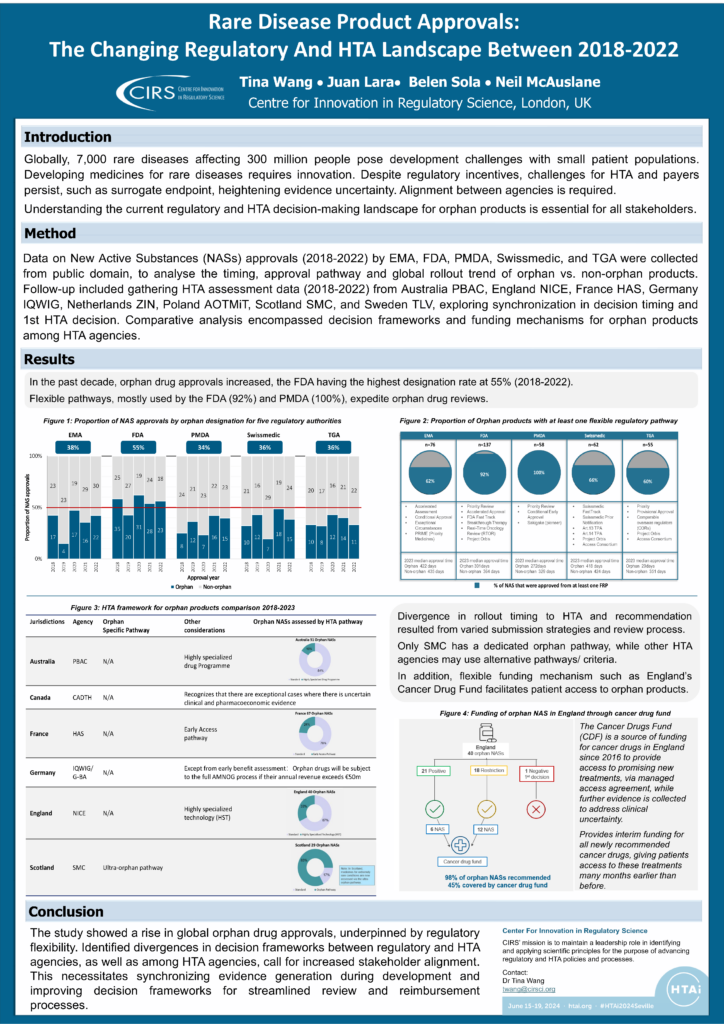Background
Globally, 7,000 rare diseases affecting 300 million people pose development challenges with small patient populations. Developing medicines for rare diseases requires innovation. Despite regulatory incentives, challenges for HTA and payers persist, such as surrogate endpoint, heightening evidence uncertainty. Alignment between agencies is required. Understanding the current regulatory and HTA decision-making landscape for orphan products is essential for all stakeholders.
Method
Data on new active substance (NASs) approvals (2018-2022) by EMA, FDA, PMDA, Swissmedic, and TGA were collected from the public domain, to analyse the timing, approval pathway and global rollout trend of orphan vs. non-orphan products. Follow-up included gathering HTA assessment data (2018-2022) from Australia PBAC, England NICE, France HAS, Germany IQWIG, Netherlands ZIN, Poland AOTMiT, Scotland SMC, and Sweden TLV, exploring synchronisation in decision timing and 1st HTA decision. Comparative analysis encompassed decision frameworks and funding mechanisms for orphan products among HTA agencies.
Conclusion
The study showed a rise in global orphan drug approvals, underpinned by regulatory flexibility. Identified divergences in decision frameworks between regulatory and HTA agencies, as well as among HTA agencies, call for increased stakeholder alignment. This necessitates synchronising evidence generation during development and improving decision frameworks for streamlined review and reimbursement processes.
This poster was presented at the 2024 HTAi Annual Meeting, 15-19th June 2024, Seville, Spain.

